#clairvius narcisse
Text
Horror Movie Review: The Serpent and the Rainbow (1988)
In a time of social and political unrest in Haiti, anthropologist Dennis Alan travels to the torn country to study a Voodoo drug used in religious practices to turn victims into living zombies.
The Serpent and the Rainbow is a 1988 American horror film directed by Wes Craven and starring Bill Pullman. The script by Richard Maxwell and Adam Rodman is loosely based on the non-fiction book of the same name by ethnobotanist Wade Davis. Wherein Davis recounted his experiences in Haiti investigating the story of Clairvius Narcisse. Who was allegedly poisoned, buried alive, and revived with an…

View On WordPress
#Adam Rodman#Aleta Mitchell#Badja Djola#Bill Pullman#Brent Jennings#Cathy Tyson#Clairvius Narcisse#Conrad Roberts#Dey Young#Evencio Mosquera Slaco#Francis Guinan#Haiti#Haitian#Jaime Pina Gautier#Luis Tavare Pesquera#Michael Gough#paul guilfoyle#Paul Winfield#Philogen Thomas#Richard Maxwell#Tetrododoxin#The Serpent and the Rainbow#Voodoo#Voodou#Wade Davis#Wes Craven#William Newman#Zakes Mokae#zombie
0 notes
Text
0 notes
Text
0 notes
Text
Guarda "LO ZOMBIE DI HAITI - La storia di Clairvius Narcisse)" su YouTube
View On WordPress
0 notes
Photo

ICYMI: The character of Clairvius Narcisse in ZOMBI CHILD, currently streaming through our #CaribbeanFilmSeries partnership with BAM (see bio link) was a real life person who was zombified!
As covered in Harvard Magazine in 1986, Narcisse was turned into a zombie by his brother over a land dispute, using a mix of puffer fish neurotoxin and poisonous cane toad secretions. Although depicted slightly differently to tell the story of this dynamic film, in real life he returned to his village 18 years later after no longer being exposed to the poison that left him a zombie slave for many years.
What a trip!
Narcisse’ story was then depicted in the book “The Serpent & the Rainbow” which soon after would be turned into a cult classic of the same name by horror master Wes Craven. That film starred Bill Pullman (Independence Day), Cathy Tyson (Mona Lisa), Zakes Mokae (Cry Freedom, A Rage in Harlem), Paul Winfield (Sounder, “King”) in a very classic scene, and Brent Jennings (Boycott, Witness).
#caribbean film series#caribbeanfilmseries#caribbean film#clairvius narcisse#haiti#zombi child#zombi#zombie films#zombi films#the serpent & the rainbow#serpent and the rainbow
3 notes
·
View notes
Text



Clairvius Narcisse (January 2, 1922 – 1994) was a Haitian man said to have been turned into a zombie by a Haitian vodou preparation, purportedly a combination of psychoactive substances. The single greatest proponent of this possibility was a graduate student in ethnobotany at Harvard University, Wade Davis, who published two popular books based on his travels and ideas during and immediately following his graduate training. However, subsequent scientific examinations using tools of analytical chemistry alongside critical review of earlier reports have failed to support the presence of the claimed key pharmacologically active compound tetrodotoxin in the preparation, which was central to the phenomena and mechanism reported by Davis. No further supporting evidence has appeared. Based on the presumption that tetrodotoxin and related toxins are not always fatal, but at near-lethal doses can leave a person in a state of near-death for several days with the person remaining conscious, tetrodotoxin has been alleged to result in zombieism, and has been suggested as an ingredient in Haitian Vodou preparations. After various anthropologic investigations of "zombie" stories in various cultures—including Narcisse and a handful of others—reports appeared that Narcisse received a dose of a chemical mixture containing tetrodotoxin (a pufferfish toxin) and bufotoxin (a toad toxin) to induce a coma that mimicked the appearance of death. He was then allowed to return to his home where he collapsed, "died", and was buried. His account was fictionized in The Serpent and the Rainbow, a 1988 American horror film directed by Wes Craven. -Wikipedia sourced.
#legends#mythology#classic#fact or fiction#zombie#zombies#clairvius narcisse#haiti#haitian#voodou#voodoo#voodew#magic#drugs#buried alive#back to life#witchcraft#wes craven#horror#horror movies#80’s film#80’s horror#creepy#the serpent and the rainbow#film
24 notes
·
View notes
Photo




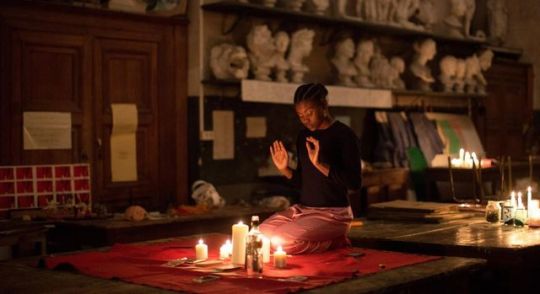

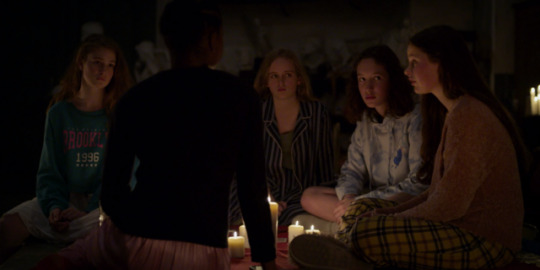


Bertrand Bonello revient sur un vrai cas de zombification, celle de Clairvius Narcisse en Haïti en 1962, dans son dernier film “Zombi Child”. Malgré le titre accrocheur, on est loin du film de zombies classique. Bonello a d’ailleurs repris l’orthographe originelle, sans e, du mot “zombi” comme pour se démarquer du genre. Le film est scindé en deux parties qui en fait s’entremêlent: l’une se passe à Haïti en 1962 et suit la zombification de Clairvius tandis que l’autre se passe de nos jours à Saint-Denis dans la prestigieuse école “La Maison d’éducation de la Légion d’honneur” fondée par Napoléon pour instruire les jeunes filles, parentes d’un détenteur de la Légion d’honneur. L’idée en soi de mêler fait historique et fiction dans le présent est plutôt bonne même si elle n’est pas entièrement nouvelle, Wes Craven s’étant inspiré du même fait pour son Empire des ténèbres. Mais il y a dans le parallèle fait par Bonello entre le zombi haïtien et la jeune fille en uniforme du lycée d’excellence quelque chose qui ne prend pas vraiment. Le personnage de Mélissa, descendante de Clairvius, est pourtant bien senti. Elle a une étrangeté un peu ambiguë et est finalement la seule qui fasse lien avec le reste de l’histoire. Mais elle n’est pas si bien exploitée et ne sert qu’à faire un pont entre Fanny, sa camarade au coeur brisé, et sa tante qui est une manbo (c’est-à-dire une prêtresse vaudoue). Et le personnage de Fanny est fade et peu crédible. Le film démarrait pourtant bien dans sa partie haïtienne: la fabrication de la poudre de zombi est plus vraie que nature, la plongée dans l’esclavagisme de “zombi” intéressante et instructive, la photographie est belle... L’image est belle mais le propos est un peu creux et on reste sur sa faim malgré l’incursion à la fin d’un Baron Samedi finalement presque plus ridicule qu’inquiétant.
#zombi child#bertrand bonello#zombification#haïti#clairvius narcisse#zombi#légion d'honneur#maison d'éducation#saint denis#film#cinéma
2 notes
·
View notes
Text
Historical Examples of Zombies
The most famous stories come from a 1997 article in the British medical journal The Lancet. One of these stories claims that a Haitian woman who appeared dead and was buried in the family tomb reappeared three years later. After an investigation, the tomb was found to be filled with stones. The woman's parents took her to the hospital, and she wasn't heard from again.
The second story from the same article was about a Haitian man named Clairvius Narcisse who was declared dead in a hospital and buried in Haiti in 1962. Narcisse showed up in his village 18 years later and claimed that he had been buried alive, dug up, and forced to work on a sugar plantation.
Stories of reanimation also show up in the Bible, such as in the Book of Ezekiel. This story describes a pile of bones that began to shake and then became covered with muscle and flesh, turning into a person who seemed alive but wasn't really.
There's also the case of Cotard's syndrome, which some people have pointed to as instances of real-life zombies. People with Cotard's syndrome believe that they are dead or in a state of decay. One example of a person with this syndrome was a 53-year-old woman who thought she was dead, said she smelled like rotting flesh and asked to be taken to the morgue.
Most present-day instances of zombie claims come from Haiti, where a voodoo practitioner, called a Bokor, is said to revive people and turn them into zombies. Bokors sometimes achieve this effect by giving people tetrodotoxin, a neurotoxin found in pufferfish. People who take tetrodotoxin have difficulty walking, confusion, and respiratory problems, making them look like a zombie. The problem is that tetrodotoxin is dangerous and can lead to brain damage, paralysis, and coma.
Read more at rayeshistory.wordpress.com
7 notes
·
View notes
Text
Everything You Need To Know About Zombies, And 5 Sightings Of The Real-life Walking Dead We STILL Can’t Explain
At this point, I’m not sure anything would surprise me.
In fact, a zombie apocalypse would actually make sense at this point. But even if the grand finale of 2020 was the dead rising from their graves, it wouldn’t actually be the first time.
According to those that practice Haitian Voodoo, zombies exist. And according to scientists, zombies exist.
But the thing is, Hollywood has gotten our favourite flesh-eating, apocalypse-heralding monsters wrong. The folklore behind these monsters is actually rather different than men and women foaming at the mouth as they mummy-walk towards you.
The reanimated corpse didn’t take its first steps with the debut cinema screening of Night Of The Living Dead (1968).
It started with slaves.
Today we are going to cover everything you need to know about zombies from forgotten folklore of years gone by, to the rumours of the living dead among us in preparation from the incoming apocalypse...
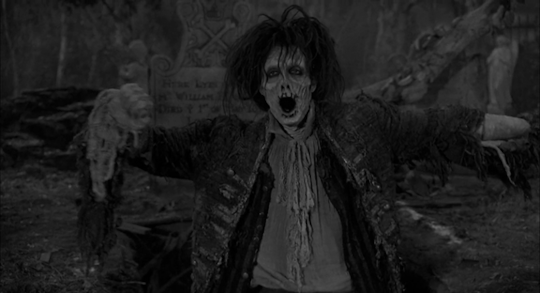
What Are Zombies?
It’s pretty simple: a zombie is someone who was dead and is now not-so-dead. According to an official definition they are corpses which have been brought back from the grave to haunt the living.
Yep - they’re just like ghosts. But instead of wafting gently they have to lump around this great hulking cadaver which is in the midst of decay.
Zombies can be traced back to Haitian Voodoo which claims that a dead body can be reanimated by magical rituals. This supernatural take on the walking dead, however, is at odds with more modern fictional beliefs which centre on science.
Parasites, diseases, and viruses (*looks into camera*) feature as the main causes of zombies taking over the world in Hollywood’s take on the beast. This new zombie first pulled itself out of the ground in 1968 with Night Of The Living Dead, but the term ‘zombies’ was only applied by fans after the release of the cult classic. They were originally known as ‘ghouls’ in the film, confirming the premise that zombies exist to haunt the living.
Following this on-screen debut, the horror genre was overrun by zombie films with Dawn Of The Dead and Thriller going down in history as some of the most iconic movies of all time. The genre waned towards the 90s, however, and was due a resurgence just before the millennium thanks to predominately East Asian video games.
28 Days Later and Shaun Of The Dead resurrected the genre at the turn of the century and shaped what zombies are now known most for: the zombie apocalypse.

The terrifying claims of a civilised world being brought to its knees by walking corpses is now a pop culture staple, but more recently its been given a makeover and shopping montage as a part of its rom-com redo. Warm Bodies and iZombie are a novel take on the horror must-have and incorporate a human-zombie relationship that is an emblem for the sexual liberation of the era.
The severed relationship between supernatural zombies and the sci-fi alternative doesn’t just take place on Netflix. There is evidence that both could exist.
Zombies In Haitian Voodoo
In 1819, poet Robert Southey was the first to use the term ‘zombie’ in his history of Brazil. This heralded the emergence of zombies in Haitian Voodoo which chimed with a concept even more terrifying than the prospect of a zombie apocalypse:
Slavery.
According to Haitian Voodoo, bokors - or witches - would use necromancy to revive a dead person. This zombie would then be under their control as a personal slave and would have no personal will.
Bokors were also known to capture ‘zombie astrals’ - part of the human soul - in a bottle which would provide the owner with extra luck or healing properties, for example.
These beliefs were rooted in Voodoo traditions brought to Haiti by enslaved Africans: they believed Baron Samedi would take them to an African heaven after they died. Those that offended the Ioa (a Voodoo god) would be a slave forever - AKA a zombie. This fear of eternal slavery was reinforced by slave drivers who were often also voodoo priests; to prevent slave suicides, they would threaten zombification.
It was this widespread belief in zombies as slaves that would spread beyond Haiti’s borders during the US’ occupation of the country in the early 20th century. A number of case studies reporting zombies came to the US’ attention, such as in the William Seabrook’s The Magic Island (1929): he cited an article in Haiti’s criminal code which recognised zombies’ existence, (it essentially said even if you murder someone and you make them come back as a zombie, it is still murder).
It was shortly after US forces entered Haiti that one of the most famous cases of an alleged zombie emerged. We will get to Felicia Felix-Mentor’s story later in this article.
Zombies In Science
Zombies are deeply rooted in some of humanity’s darkest chapters in history - but they also have a place in our natural history, too.
Technically, zombies do exist. Sure, if you made the claim for human zombification via Voodoo priest scientists would counter with claims that these ‘zombies’ are schizophrenic, in a catatonic state, or are suffering from a mental illness that mirrors how we believe they would act. But if you made a similar claim for other animals - namely insects - they’d believe you.
In fact, there are numerous known cases of such instances.
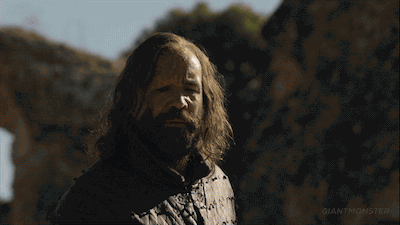
Whilst there are no known insects that practice Haitian Voodoo, these cases follow the basic plotline of zombie cult classics - parasites infect them and alter their behaviour or use them to their advantage. The parasites effectively make slaves out of those they target, mirroring what we saw in Haiti.
Take zombie carpenter ants, for example:
A fungus enters their bloodstream, hijacks their mind and grows around their muscles. Within one short week the ant is compelled to leave its colony and seek higher ground which has the right temperature and humidity for the fungus to grow in. It then forces the ant to bite down into a leaf, grows a stalk through the ant's head, and cuts off the ant’s muscle control.
The ant’s corpse still moves its legs vigorously as the bulbous capsule of fungi spores grows through what’s left of its body to infect the ant colony below.
There are many more examples just like this with most parasites having their own unique - and uncomfortably brutal - method of killing off wildlife.
Scientists are unable to refute claims that a parasite might mutate and have a similar effect on humans one day, reducing us all to the zombie hordes seen in the movies.
We just have to wait and see.
Cases Of Actual, Real-life, Not-so-living-n-breathing Zombies
Although scientists don’t support claims that Haitian voodoo can in fact raise the dead and create personal slaves, various sightings and reports suggest that human zombies do exist.
Question is - do you believe them?
#1 - Felicia Felix-Mentor
In 1936, the owner of a farm in a small village in Haiti woke up to quite a shock.
A naked woman staggered towards them with her raspy voice mumbling and slurring that this farm belonged to her farmer. But the most terrifying thing about this strange woman that stumbled her way through the village was that she looked rather familiar.
In fact, they were pretty sure that this was a woman who had died and had been buried many years before.
19 years before.
Zora Neale Hurston - an anthropologist - investigated this alleged case of zombification and met Felicia Felix-Mentor at a hospital. The doctors were convinced she was a zombie and her husband confirmed this was his wife.
Even Hurston admitted that she believed what they were telling her:
“I know that I saw the broken remnant, relic, or refuse of Felicia Felix-Mentor in a hospital yard.”
#2 - Clairvius Narcisse
30 odd years after Felix-Mentor first wandered up to her father’s old farm, a 40 year old man admitted himself into hospital in Deschapelles, Haiti. Doctors, however, were unable to work out why he had a fever, was clearly fatigued, and was spitting up blood. He died 3 days later.
20 years after he died, a man claiming to be Narcisse approached Angelina Narcisse, his sister.
He told her and other villagers private, personal information in an attempt to convince them that he was in fact Clairvius and had been turned into a zombie for use on a sugar plantation. He had been paralysed for the duration of his burial and then dug up to be put to work as a slave.
He described in detail the process of his alleged zombification, claiming she was given a paste made from hallucinogenic chemicals which scientists would later use to refute most claims of zombies as simply a drugged state. When the bokor died and he was no longer fed the concoction, he regained his sanity and thus his free will, and returned to his family.
Much like Felix-Mentor’s story, Narcisse is actually widely believed to have been a zombie. His death was documented by 2 American doctors unlikely to follow Haitian Voodoo folklore, and even the man who investigated his claims - Lamarque Douyon - believed to some extent zombies could be real despite dismissing supernatural claims.
He brought a sample of the powders or paste used by the bokor back to the US to investigate whether ‘zombies’ were actually people who were drugged and then revived.

#3 - Woman from Port-au-Prince
Only known as FI to The Lancet, the journal investigating cases in southern Haiti in the late 90s, she was discovered 3 years after her death wandering near the village she once called home by a friend.
FI was mute and unable to feed herself but she was still recognised by her family, her fellow villagers, and the local priest by a distinct facial mark and other features.
The local courts opened her tomb to investigate the fact that she had apparently risen from the dead and found it full of stones. Her husband was accused of zombifying her after he caught her having an affair.
Despite local claims of supernatural goings-on, she was later admitted to a psychiatric hospital in Port-au-Prince.
#4 - Son of a secret policeman
WD (mentioned in the same study by The Lancet) was 18 years old when he became ill. He developed a fever, his body swelled up, and his eyes went yellow. They thought he was dying or at least already dead.
His father asked his brother to get advice from a bokor but WD died 3 days later. 19 months after he was buried, he reappeared at a cock fight and recognised his father before accusing his uncle of zombifying him.
#5 - Unknown young woman
MM (also mentioned in the same study by The Lancet) was joining her friends in prayer for a local who had been zombified when she fell under a similar affliction. The 18 year old became ill with diarrhoea and fever, her body swelled, and she died.
Her family immediately suspected a sorcerer had had their way with their daughter.
13 years later and MM reappeared at the town markets, claiming not only had she been a zombie in a village 100 miles away, she had had a child with another zombie.
When her bokor died, his son released MM from their control and she travelled home.

What do you think?
Are zombies real? Or are they merely a fictional beast haunted by the forgotten history of slavery?
If you liked this post I’m pretty sure you’ll love the other articles I post every Saturday! Make sure you hit follow if you want to see ‘em.
Can’t wait ‘til next weekend for a new hit of horror? Check out this online archive of paranormal experiences…
#zombie#zombie apocalypse#zombie folklore#voodoo#voodoo ahs#ahs#american horror story#the walking dead#28 days later#new orleans#necromancy#history of slavery#slavery#witchcraft#supernatural#paranormal#Unexplained Mysteries#unexplained crime#unexplained#horror movies#best horror movies#horror#cryptids#vampires#big foot#real ghost stories#spirits#ghosts#demons#folklore
19 notes
·
View notes
Text
The Living Dead
I think zombies are some of my favourite creatures. They're pretty cool right?
Although it would be terrible, a zombie apocalypse would be very interesting.

The definition of a zombie is a fictional undead being created through the reanimation of a corpse. The most popular way a person can be turned into a zombie is through a bite, even if they are alive.
The Fear Goes Back
Although Haiti is mainly where zombies originated, Ancient Greeks may have been the first to be afraid of the dead rising.
Archaeologists found ancient graves which contained skeletons pinned down by rocks, seemingly to prevent them from escaping in the event of reanimation.
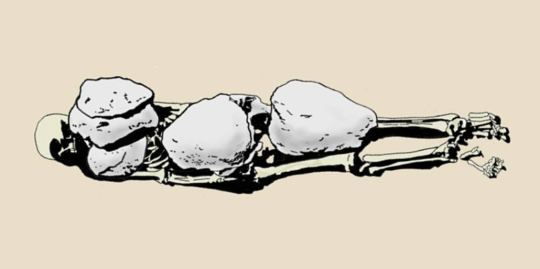
A Haitian Origin
The zombie (or Zombi in Haitian French) comes from old Haitian folklore where a zombie is a dead body reanimated using magic or voodoo.
Haiti is very popular for It's voodoo so I could go more into depth with that another time.
The belief is that a Zombi remains under the control of the Bokor (Sorcerer or witch) that resurrected it as a slave, that only lives to serve It's owner. Although there have been cases of 'zombies' escaping.

This drawing isn't very detailed ,although I think the intense darkness is what is so haunting to me.
It also includes a non-physical type of zombie called the 'zombie astral', which is part of the human soul. Some Bokors capture this to enhance their spiritual power. They can also sell it sealed in a bottle to bring good luck, healing and success.

These traditions were brought to Haiti by enslaved Africans. It was believed that the deity Baron Samedi (A loa of the dead) would gather them from the grave and take them to a heavenly after life, unless they has offended him which is what would cause them to become a slave after death, as a zombie.
In some communities it is believed a person can be zombified by a small child while in others it is also believed that a witch can zombify a person by killing and possessing the victims body.
The Real Life Zombie That Shocked The World
On May 2, 1962, a Haitian man named Clairvius Narcisse was pronounced dead by two doctors after weeks of a mystery fever. Narcisse's family buried him in a small cemetery near the town of l'Estere.
The End.
Just kidding.
Eighteen years later, in 1980 a man that locals said 'looked dead in the eyes' approached a woman named Angelina (Narcisse's sister) claiming that he was her brother. He explained that he has been resurrected by a witch doctor who enslaved him on a sugar plantation.

Possible Explanations
Locals who believed in voodoo accepted the story, no questions asked. But western scientists were obviously quite sceptical of the story.
This story prompted Harvard ethnobotanist, Wade Davis to travel to Haiti.
As a result of his investigations he claimed a person can be turned into a zombie by two special powers that have to be introduced into the blood stream.
The first 'coup de poudre', includes tetrodotoxin, the powerful and often fatal neurotoxin found in the flesh of the pufferfish.
The second consists of deliriant drugs such as datura which can cause, hallucinations, psychosis and sometimes death.

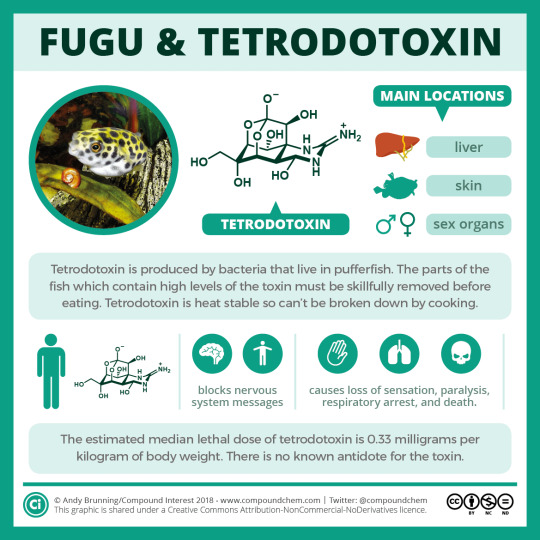
These two powders together could induce a death like state in which the person would be completely submissive to the Bokor.
The ingredient most questioned and unethical is part of a recently buried child’s brain which many scientists say has no actual benefit.

Modern Zombie Archetype's evolution
When zombies first appeared in literature, they were described as spirits and ghosts instead of the modern cannibalistic, brain dead monster.
The film really known as the first zombie film is the 1932 release of White Zombie by Victor Halperin.

Frankenstein by Mary Shelly, while not necessarily a zombie novel, did help to shape the modern day idea of a zombie. This caused the creation of a zombie to become more scientifically based instead of being a mystical occurrence
Modern day zombies usually aren't caused now by something spiritual, instead being created by some kind of virus.
The tales of them being so violent and vengeful helped inform the vampire found in European folklore.
In modern fiction zombies have become incredibly popular.
They have inspired some amazing games like Resident Evil (My favourite games. If you love video games and horror but haven't played a resident evil game before, you should) and movies like Return Of The Living Dead (An awesome movie)

If you're really afraid of a zombie apocalypse happening then you shouldn't be. Scientists have looked into it and concluded that it just simply wouldn't work
But, if you're still scared, there are many zombie survival kits online.
#zombie#zombies#scary#horror#creepy#scared#african#african folklore#african mythology#return of the living dead#undead#paranormal#apocalypse#zombie apocalypse#voodoo#ancient greek#resident evil#Haitien#haitien folklore
41 notes
·
View notes
Photo

Horror Movies Based on True Events 2
Winchester (2018)
Helen Mirren stars in the movie as a firearm manufacturer’s widow who thinks she is being haunted by the ghosts of people who were killed by the rifles of her husband’s company. The mansion she lives in is based on a real place, known as the Winchester Mystery House, which the real-life woman who Mirren plays spent 38 years constructing and renovating as she lived there. Legend has it she was taking building direction from spirits, with a tour guide telling Vanity Fair that Ms. Winchester would have séances at night and then give new building plans to her foreman in the morning.
The Hills Have Eyes (1977 & 2006)
Wes Craven’s cult classic (and its remake) centers around a traveling family whose car breaks down, leaving them stranded and in the clutches of cannibals. The movie was inspired by Sawney Bean, a Scottish man who, according to legend, led his clan to kill and eat 1,000 people around the year 1600. A Scottish historian told The BBC in 2013 though that the legend was fiction, created by prejudiced Englishmen “as a dig at Scots.”
The Haunting in Connecticut (2009)
Ed and Lorraine Warren strike again! The couple claimed that a Connecticut home rented by the Snedeker family in 1986 had been overtaken by demons, likely because the building was previously a mortuary. In the movie, a fictional Campbell family is tormented by supernatural beings.
The Exorcism of Emily Rose (2005)
The movie’s title character is a 19-year-old girl who dies following an exorcism, and the film focuses on the trial of the priest who performed it. It’s based on the real 1976 case of Anneliese Michel, a German woman who died at the age of 23 from starvation following 67 exorcisms to rid her of supposed demons.
The Amityville Horror (1979)
In the movie, a young couple buys a house in Amityville, New York, and it turns out to be haunted by supernatural evils. The real-life Lutz family moved to an Amityville home in 1975 about a year after Ronald DeFeo Jr. murdered six family members there. The Lutzes moved out after just 28 days, citing strange odors, sounds, gelatinous drops, and other terrifying phenomena.
Dahmer (2002)
Jeremy Renner starred as the notorious serial killer in this horror biopic that includes fictional versions of several of Dahmer’s victims. Dahmer, also known as the Milwaukee Cannibal, ultimately took the lives of 17 boys and men.
The Blob (1958)
The Blob was inspired by a 1950 incident involving a handful of Philadelphia police officers who witnessed a mysterious, gelatinous alien mass fall from the sky. It allegedly dissolved before long, and thankfully didn’t eat anyone.
Deranged (1974)
A deranged man becomes obsessed with corpses, eventually resorting to creating new ones. The film was subtitled “The Confessions of a Necrophile” in the US. Like so many other horror films of the era, Deranged killer Ezra Cobb was based on the murderer Ed Gein.
Jaws (1975)
An enormous shark terrorizes beachgoers off the coast of the fictional New England town of Amity Island. Jaws was inspired by the 1916 deaths in New Jersey of five victims at the teeth of one ferocious rogue shark.
Eaten Alive (1977)
The proprietor of a rural Texas hotel attacks victims and feed them to his pet crocodile. The events of Eaten Alive, which also went by the alternate titles Death Trap, Horror Hotel, and Starlight Slaughter, were based on the real life “alligator killer,” Joe Ball. Ball murdered at least two women in the 1930s, and rumor is he disposed of the bodies by feeding them to the pet alligators he kept at his Elmendorf, Texas bar.
Audrey Rose (1977)
In one of his earliest roles, Anthony Hopkins plays Elliot Hoover, who becomes convinced that a 10-year-old girl is the reincarnation of his dead daughter. Audrey Rose was adapted from a novel of the same title by Frank De Felitta, who was inspired to explore reincarnation in his writing after his 6-year-old son allegedly began spontaneously playing ragtime piano.
The Entity (1982)
A woman is attacked by a paranormal, invisible attacker. The Entity was adapted from the novel of the same name by Frank De Felitta (also the author of Audrey Rose). It was based on the story of a Culver City, Calif. woman who believed she was being raped by ghosts.
The Entity (1982)
A woman is attacked by a paranormal, invisible attacker. The Entity was adapted from the novel of the same name by Frank De Felitta (also the author of Audrey Rose). It was based on the story of a Culver City, Calif. woman who believed she was being raped by ghosts.
The Serpent and the Rainbow (1988)
An ethnobotanist–a scientist who studies how native cultures use plants for medicine and other purposes–investigates a drug that allegedly creates Voodoo zombies. It was based on the nonfiction book of the same name by real world ethnobotanist Wade Davis, who investigated the story of alleged zombie Clairvius Narcisse.
Child’s Play (1988)
A child’s doll is possessed by the soul of a serial killer. Chucky’s story was inspired by Robert, a haunted doll that allegedly talked and inspired fits of rage in its young owner. Robert is still on display in the Florida Key West Martello Museum.
Fire in the Sky (1993)
A group of men are investigated for murder after a friend was apparently abducted by aliens. In 1975 Travis Walton claimed to have been abducted by a UFO, although he was never able to prove it.
The Dentist (1996)
Amid various hallucinations, a sadistic dentist gets revenge on his cheating wife. It’s been speculated that The Dentist was based on the true story of Dr. Glennon Edward Engleman, a Missouri dentist who, over decades, convinced multiple women to marry other men, who he would then murder. They’d split the insurance checks.
Ravenous (1999)
A US soldier during the Mexican-American War is assigned to a remote mountain fort, where he encounters a stranger who turns out to be a murderous cannibal. Ravenous was inspired both by the Donner Party, the infamous group of pioneers who were forced to resort to cannibalism after becoming stranded in the Sierra Nevada mountains, and by Alfred Packer, who apparently ate his companions on a gold-prospecting expedition when they became stranded in the Rockies.
From Hell (2001)
Scotland Yard investigates the murders committed by the infamous Jack the Ripper, uncovering conspiracies along the way. From Hell, based on a graphic novel by Alan Moore, speculates on the real murderer Jack the Ripper, who was never definitively identified.
Wolf Creek (2005)
Three backpackers are hunted by a madman through the Australian outback. Writer and director Greg McLean said Wolf Creek was based on three separate real life Australian serial killers: Ivan Milat, AKA The Backpacker Killer, who murdered backpackers in the ’90s; Bradley Murdoch, who allegedly tried to kidnap a woman after murdering her boyfriend; and the Snowtown Murders, a series of 11 grisly murders carried out by four men and one woman in the small town of Snowtown in South Australia.
Them (2006)
A couple are attacked in their home by a group of sadistic children and teenagers. Them is reportedly based on the story of an Austrian couple murdered at their home in the Czech Republic. That said, the details on those alleged real events are hard to come by, so take this one with a grain of salt.
#Horror Movies Based on True Events 2#horror#horror movies#paranormal#ghost and hauntings#ghost and spirits
53 notes
·
View notes
Photo


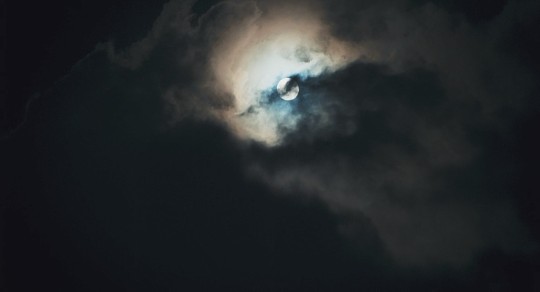






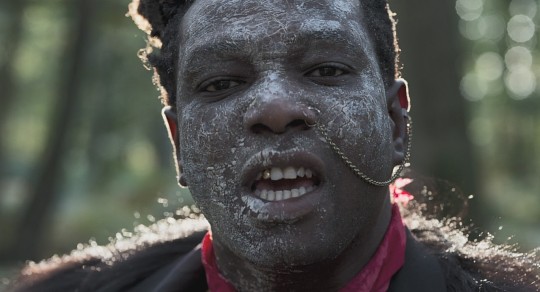
Zombi Child (Bertrand Bonello, 2019)
Los zombis existen en realidad. Por supuesto los de verdad no tienen mucho que ver con lo que nos contó George A. Romero en La noche de los muertos vivientes (Night of the Living Dead, 1968), ni tampoco con los que nos mostraron los infinitos que le siguieron/copiaron después con más o menos tino, que de todo hubo. Tienen más que ver con los que aparecían en La legión de los hombres sin alma (White Zombie, Victor Halperin, 1932), probablemente la primera película en tratar el tema, el de los muertos que regresan a la vida, o con los de Yo anduve con un zombi (I Walked With a Zombie, 1943) de Jacques Tourneur, otra de las pocas que siguió por esa senda más realista, menos sensacionalista. Por supuesto, existen en Haití, tierra del vudú (que también existe) y es muy interesante el interesante e increíble ensayo Zombi, de Philippe Charlier (Ed. Melusina, 2017) que se encarga de dejar constancia de todo esto desde la propia experiencia. La película de Bonello, que nada tiene que ver con el libro de Charlier salvo la temática, ahonda en esta antigua y todavía vigente práctica a través de la muy romántica historia de un zombificado, entremezclada con la de una estudiante haitiana en el París de nuestros días, a la que sus compañeras de clase hacen un hueco en su grupo. Una película de iniciación, que a través de sus dos historias emparentadas combina el clasicismo de su puesta en escena con la modernidad de su banda sonora, y en la que Bonello sustituye las prostitutas de L'Apollonide por las estudiantes de un Liceo de niñas bien, y una vez más presume de una realización cuidada al máximo, con largos travellings y planos estéticamente muy cuidados, algunos incluso podríamos decir que matemáticamente calculados, y también pequeños detalles dignos de ser destacados (me gustó mucho la conversación telefónica observada desde los dos puntos de vista en distintos momentos del metraje, sin explicitar que se trata de la misma conversación). La historia del zombi es narrada de una forma escrupulosamente silente, sin apenas diálogos, y también sistemática —desde los primeros insertos de la extracción de la tetrodoxina del pez globo, su espolvoreo en los zapatos de Clairvius Narcisse (personaje que existió realmente), su tambaleo, su entierro, su desenterramiento, y esto solo es el principio...—. La conexión entre ambas historias se deja ver venir, pero sin obstaculizar al interés por la narración, que al final coquetea brevemente con el terror, y aún sin ser una de las mejores virtudes del film, es una parte que resulta cuando menos inquietante.
3 notes
·
View notes
Link
If you love unique takes on zombies, this is a really good film--and based on the odd real-life “zombi,” Clairvius Narcisse. This is my review of it.
I also suggest to double-feature it with Cargo, another zombie film where zombification is tied to colonization and oppression of marginalized people.
4 notes
·
View notes
Photo
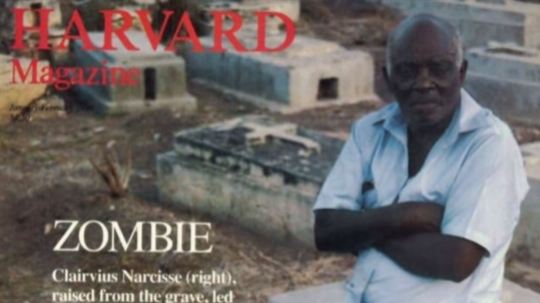
#Dokumentar
► Mystery Mix | SERIE – 2021 – N°6
Fall von Clairvius Narcisse aus Tahiti, GI in Irak über nächtliche Phänomene in Häusern
Jetzt abonnieren
#Clairvius Narcisse#Gift#Harvard Magazine#Irak#Kugelfisch#Kugelfischgift#nichts#paranormal#Stechapfel#Tahiti#Tigrit#Untote#US Armee#US Army#Voodoo#Zombie#Zombifizierung
0 notes
Text
Clairvius Narcisse, transformat zombi prin magia voodoo
Clairvius Narcisse, transformat zombi prin magia voodoo
Clairvius Narcisse (circa 1922 – 1994) este un haitian a cărui notorietate provine din povestea pe care a dezvăluit-o că ar fi fost transformat într-un zombie și eliberat de urmăritorii săi. El ar fi făcut parte din așa numiții morți-vii nemuritori care au fost drogați pe întreaga perioadă a sclaviei lor pentru a-i face să lucreze în rafinării sau plantații.
Sursă Zombi alien, foto Carlos…
View On WordPress
#1962#1980#1987#albizia#antropolog canadian#cianura#Clairvius Narcisse#cocaina#drogaţi#Esther#Haiti#haitian#houngan#Inițiatul voodoo#magia voodoo#magia voodoo din Haiti#morți-vii#Parkinson#Șarpele și Curcubeul#sclaviei#șef spiritual voodoo#Spitalul Deschapelles#tetrodotoxină#vraciul voodoo bokor#Wade Davis#Wes Craven#zombi#zombificări
0 notes
Text
he, per Arte, has been preparing Zombi Child, which the supplied synopsis lays out (minus some possible translation snafus) like so:
“On the border of ethnology and fantasy, Bertrand Bonello recounts the destiny of the Haitian Clairvius Narcisse, victim of a voodoo spell that turned him into a zombie. Mixing stories and epochs between Haiti in 1962 and Paris today, between Narcisse, a 15-year-old Haitian girl and her aunt, a voodoo priestess, Bonello places the Haitian zombie, the origins of the cinematographic genre, in its history and dimension.”
#he think he me#do wonder if this plays into colonial fantasies but i trust Bonello a little more than that#an account for a life with an immense sense of vacancy is in line with his work (ie la guerre l’appolinide even Nocturama) that makes it#sound a bit promising?
9 notes
·
View notes